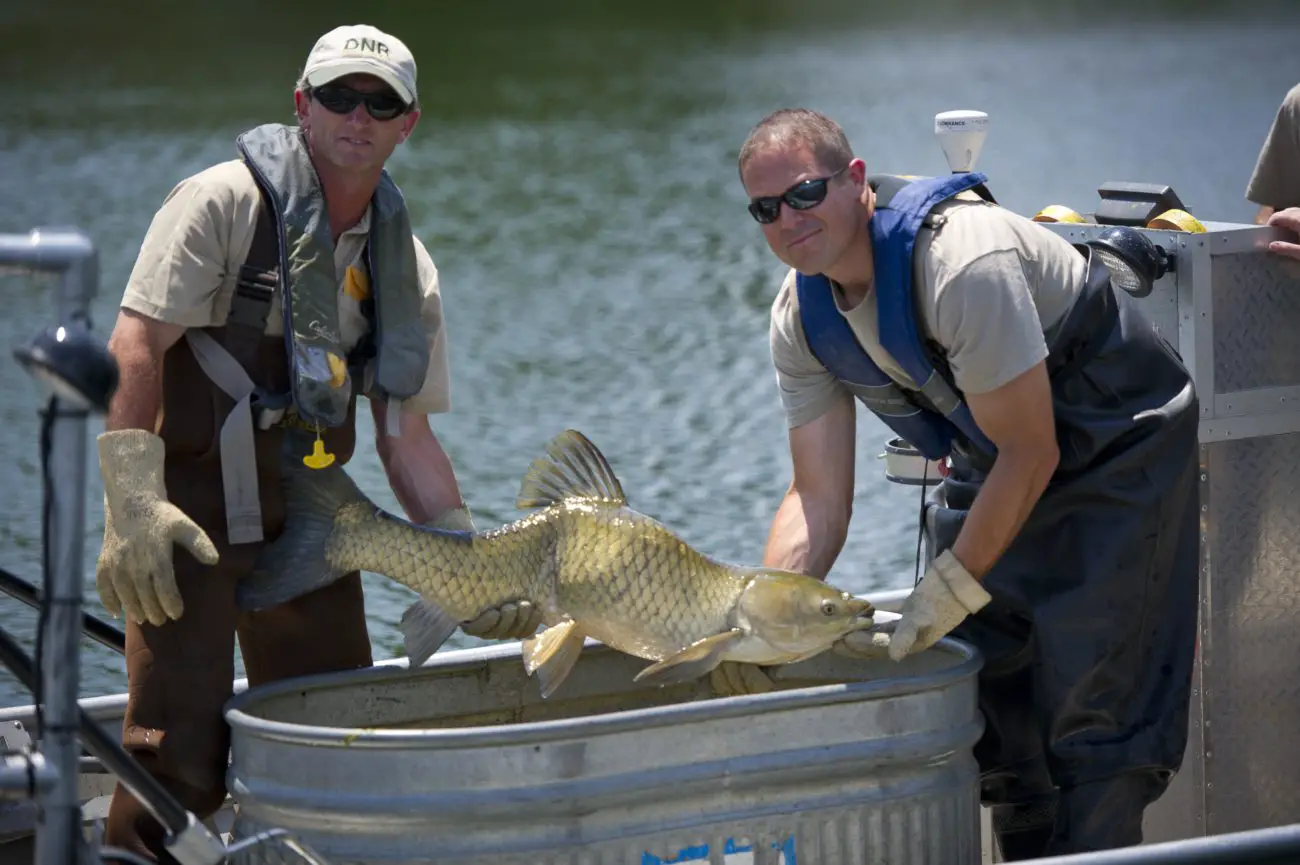Many of us have seen the crazy pictures of Asian carp jumping into a speeding fishing boat along the Illinois River. Unfortunately, it’s become so commonplace that there is now a redneck tournament to round up the jumping carp. Some have taken it to the next level with a thing called “skarping” involving towing a helmeted wakeboard on the river to net the invasive carp as a boat gets them to jump wildly. The species has become so pervasive that we now have a Great Lakes Asian carp problem that must be addressed.
Ilinois has offered a bounty on the invasive species that local fishers are taking advantage of. However, that is an expensive option that critics say is a losing tactic. However, one company in Montreal has a novel approach to help solve the Asian Carp problem.
What Are Asian Carp?
Asian carp are classified as invasive species. The four Asian carp species (bighead, black, grass, and silver carp) were introduced to the United States in the 1970s as a technique of controlling nuisance algae blooms in wastewater treatment plants and aquaculture ponds, as well as for human consumption. Within ten years, the carp escaped captivity and spread to the Mississippi River basin and other major rivers like Missouri and Illinois.
Reaching 110 pounds and reproducing very rapidly, they soon become a dominant species in these waters.
Why Are Asian Carp A Problem?
Asian carp compete directly for food and habitat with native aquatic species. Their fast population growth is causing havoc in the ecosystem and food webs of the Midwest’s large rivers. Asian carp have destroyed local fish communities and interfered with commercial and recreational fishing in regions where they are ample.
Asian carp are one of the Great Lakes’ most serious dangers. This population is invasive and has the potential to spread to all rivers and the Great Lakes. In addition, because of their voracious hunger, they tend to eat out other native fish species, resulting in depleted populations and an unbalanced aquatic ecosystem.
Why Do Asian Carp Jump?
The silver carp species are readily disturbed and will jump up to 10 feet into the air in response to a fishing lure placed in the water, passing boats, geese taking off from the lake, or just finding themselves in an unexpectedly tight spot. They also take off when they hear the sound of outboard motors, frequently landing on boats and sometimes harming the passengers. This can be disastrous with a boat speed of more than 20 knots and fish weighing more than 20 pounds. Jumping fish have gravely harmed and damaged several boaters. In addition, water skiing on the Missouri River is now hazardous since the majority of the fish jump behind the boat.
Can You Eat Great Lakes Asian Carp?
All Asian carp have white, firm, mild flesh that is good for table cuisine, but all Asian carp contain intramuscular bones in the filets that many people dislike. Asian carp feed low on the food web, grow quickly, have minimal fat content in filets, and are not often bottom feeders – all characteristics of fish that are low in pollutants. However, like with any fish collected from inland waters, be careful of any prohibitions on consuming fish from any particular waterway.
What One Company Is Doing To Make Use of Asian Carp

A Canadian company based in Montreal, Quebec, takes a novel approach to create sustainable pet foods. Founded in 2015, Wilder Harrier began by making dog treats out of insects such as crickets.
Recognizing an opportunity, Wilder Harrier reached out to commercial fishing operators in Illinois to target the invasive carp to make dog food. Unfortunately, the fisher uses small boats and avoids catching native species. The fish is then shipped to Montreal for processing into dog food.
The images below contain affiliate links. If an item is purchased, we may receive a commission.



Will Dogs Eat Asian Carp?

The company notes that dogs crave the taste of Asian carp. People that have eaten it say they taste like a cross between scallop and crab.
They claim that their Sustainable Fish formula is perfect for dogs that have food allergies or intolerances. Fish, in general, are widely used in hypoallergenic dog diets, but Asian carp has the extra benefit of being used in pet food very rarely, maximizing its hypoallergenic characteristics.
They also claim the Asian carp is a full and balanced ingredient, with a higher protein content than beef and a similar nutritional profile to salmon.
Where Can You Buy Wilder Harrier Fish Dog Food.
If you live in Canada, you are in luck. The company’s food is available at stores throughout Canada. For those in the United States, all of their products are available online.



